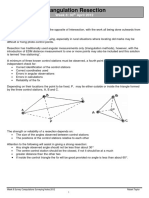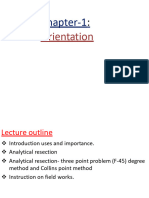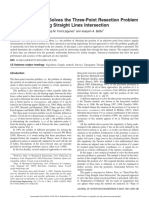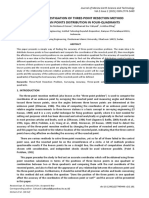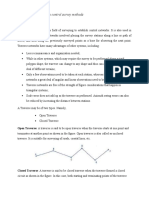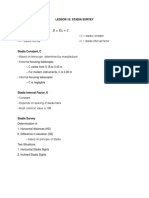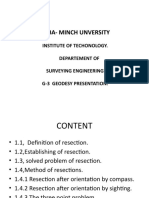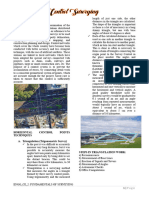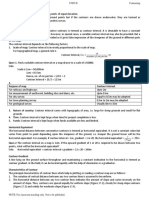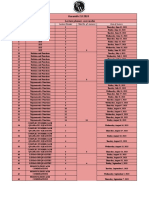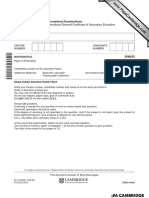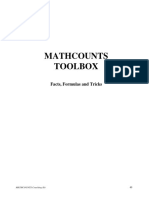0% found this document useful (0 votes)
55 views34 pagesIntersection and Resection
The document discusses the concepts of resection and intersection in geospatial engineering, detailing their definitions, principles, and applications. Intersection is used to locate points from known control points, while resection determines the position of an instrument based on angles to known points. Various methods for both techniques are presented, along with their advantages, disadvantages, and practical considerations for field application.
Uploaded by
rohan080geo28Copyright
© © All Rights Reserved
We take content rights seriously. If you suspect this is your content, claim it here.
Available Formats
Download as PDF, TXT or read online on Scribd
0% found this document useful (0 votes)
55 views34 pagesIntersection and Resection
The document discusses the concepts of resection and intersection in geospatial engineering, detailing their definitions, principles, and applications. Intersection is used to locate points from known control points, while resection determines the position of an instrument based on angles to known points. Various methods for both techniques are presented, along with their advantages, disadvantages, and practical considerations for field application.
Uploaded by
rohan080geo28Copyright
© © All Rights Reserved
We take content rights seriously. If you suspect this is your content, claim it here.
Available Formats
Download as PDF, TXT or read online on Scribd
/ 34



